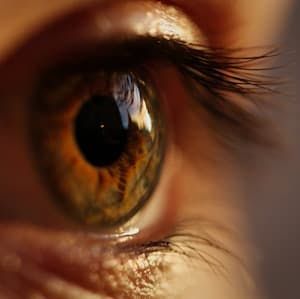OCT Biomarkers May Predict Response to Ranibizumab in DME Eyes
A new analysis of OCT biomarkers may help elucidate the utility of OCT biomarkers as therapeutic predictors of ranibizumab treatment among eyes with diabetic macular edema.
Credit: Marc Schulte/Pexels

New real-world data indicated the utility of optical coherence tomography (OCT) biomarkers as therapeutic predictors of intravitreal ranibizumab treatment among eyes with diabetic macular edema (DME).1
The investigative team from China Medical University Hospital found that the presence of disorganization of retinal inner layers (DRIL), large outer nuclear layer cyst (LONLC), intraretinal cysts (IRC), and subretinal fluid (SRF) were significantly associated with central retinal thickness (CRT) improvement after intravitreal ranibizumab injections.
“Our study demonstrated certain OCT features to be significantly associated with early functional and structural response in DME eyes after IVR,” investigators wrote. “Our results are important as they contribute towards the literature about the potential usage of such parameters.
Better knowledge of which OCT parameters can predict therapeutic response after intravitreal anti-vascular endothelial growth factor (anti-VEGF) injections could be helpful for individualizing treatment plans for patients. The research team, led by Chun-Ju Lin and Chun-Ting Lai, investigated how OCT-based biomarkers may predict one-year real-life outcomes among eyes with DME following intravitreal ranibizumab treatment.
The retrospective case series was conducted at a single tertiary medical center of the China Medical University Hospital from January 2018 to January 2021. Patients were reviewed for baseline demographics, type of retinopathy, and any previous treatment for DME. Within the study, OCT, CRT, intraocular pressure (IOP), and BCVA were recorded at baseline before IVR injections and at 3 months, 6 months, and 12 months after intravitreal injections.
A total of 65 eyes from 35 treatment-naive patients with DME treated with intravitreal ranibizumab were recruited for the analysis. OCT scans were evaluated for biomarkers of interest, including CRT, hyperreflective foci (HRF), SRF, IRC, LONLC, ellipsoid zone disruption, DRIL, hard exudates, epiretinal membrane (ERM), and vitreomacular interface (VMI). The correlation between OCT biomarkers and visual and structural outcome measures was analyzed by investigators.
Upon analysis, there was a significant reduction (P <.0001) in CRT for all 65 eyes after intravitreal ranibizumab treatments at final follow-up compared to baseline. Data showed the baseline mean initial CRT was 361.42 ± 99.72 µm and the mean CRT at the 12-month follow-up after IVR treatments was 300.02 ± 47.03 µm. Over the follow-up period, CRT had a significant reduction in the first 3 months and the effect was sustained until the end of the study period.
Moreover, the mean BCVA change in logMAR for all 65 eyes after intravitreal ranibizumab showed a significant improvement (P <.005) at final follow-up compared to baseline before treatment. Data showed the baseline BCVA was 0.51 ± 0.41, compared to the 12-month BCVA of 0.38 ± 0.48. Investigators noted an initial gradual trend towards BCVA improvement that only reached statistical significance at the 12th month of follow-up after intravitreal ranibizumab.
In multiple regression analysis, eyes presenting with DRIL (odds ratio [OR], 8.69), LONLC (OR, 8.5), and SRF (OR, 17.58) at baseline OCT were associated with a CRT improvement of ≥50 µm at final follow-up. Investigators noted biomarkers of IRC, LONLC, and SRF were predictive for significant improvement in terms of BCVA and CRT after treatment.
Additionally, data showed a significant reduction in IRC (64.6% to 49.2%), LONLC (41.5% to 21.5%), SRF (13.8% to 1.5%), and number of HRF after intravitreal ranibizumab treatment (P <.005), compared to baseline. The team noted none of the OCT biomarkers (DRIL, LONLC, SRF) were significantly correlated with CRT improvements less than 100 µm.
“Once validated in future studies, these parameters have the potential to transform clinical care for DME patients through its theoretical applications towards active monitoring as well as influencing the treatment plans for such clinical cohort,” investigators wrote.
References
- Chang YC, Huang YT, Hsu AY, et al. Optical Coherence Tomography Biomarkers in Predicting Treatment Outcomes of Diabetic Macular Edema after Ranibizumab Injections. Medicina (Kaunas). 2023;59(3):629. Published 2023 Mar 21. doi:10.3390/medicina59030629